
Why Multi-Factor Authentication (MFA) is No Longer Optional
As cyberattacks become more sophisticated, relying on passwords alone is no longer sufficient for securing accounts and sensitive data. Multi-Factor Authentication (MFA) adds an additional layer of security, requiring multiple forms of verification before granting access. This significantly reduces the risk of unauthorized access from compromised passwords. Industries dealing with sensitive data or financial information, such as banking and healthcare, must adopt MFA to protect their resources.
✨ Raghav Jain
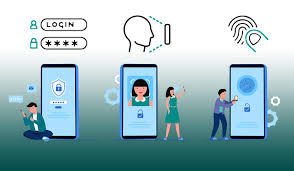
Introduction
In today's digital world, cybersecurity is more crucial than ever. With the rise of cyberattacks and data breaches, ensuring that your personal and organizational information is secure has become a top priority. One of the most effective ways to enhance security is through Multi-Factor Authentication (MFA). Once seen as an optional feature, MFA has now become a necessary layer of defense for both individuals and organizations. This article explores why MFA is no longer optional and its growing importance in protecting against cyber threats. In today's digital landscape, the necessity for Multi-Factor Authentication (MFA) has become undeniable, as cyber threats grow more sophisticated and pervasive, targeting individuals and organizations alike. With cyberattacks becoming more frequent and devastating, relying on just a single form of authentication, such as a password, is no longer sufficient to protect sensitive data and systems. Passwords, once seen as a basic and primary means of security, are now increasingly vulnerable to a variety of cyberattacks, including brute-force attacks, phishing, and credential stuffing. Despite the growing awareness of cybersecurity threats, many individuals and businesses still underestimate the importance of additional security layers. However, as cybercriminals constantly evolve their techniques, so must our defense mechanisms, and that’s where MFA steps in. MFA adds an extra layer of protection by requiring multiple forms of verification from users, typically combining something you know (like a password), something you have (like a smartphone or hardware token), and something you are (like biometric information such as a fingerprint or facial recognition). This simple but powerful combination dramatically reduces the risk of unauthorized access, even if one of the authentication factors is compromised. One of the primary reasons why MFA is now considered essential is the increasing frequency of data breaches and hacks, many of which are linked to weak or stolen passwords. For instance, high-profile incidents like the Equifax breach or the SolarWinds hack were both made possible by compromised login credentials, underlining how dangerous it is to rely solely on passwords for authentication. Hackers have become highly adept at using social engineering tactics, phishing campaigns, and other tools to gain access to login details, rendering traditional security measures insufficient. In light of these threats, MFA not only fortifies the security of sensitive accounts and information but also helps reduce the impact of a breach if one were to occur. By requiring multiple verification methods, MFA makes it significantly harder for an attacker to impersonate a legitimate user, even if they manage to steal a password. This is especially important in environments where sensitive personal, financial, or corporate data is being accessed, such as in online banking, healthcare, and cloud services. Moreover, the regulatory landscape has also begun to recognize the need for stronger security measures, with many industries now mandating MFA as part of compliance standards. The General Data Protection Regulation (GDPR) and the Health Insurance Portability and Accountability Act (HIPAA) are just a few examples of regulations that stress the importance of protecting personal and sensitive data through robust security mechanisms like MFA. Failing to comply with these regulations can lead to hefty fines and reputational damage, which is why businesses can no longer afford to ignore MFA as a critical element of their cybersecurity strategy. Additionally, with the rapid shift toward remote work and the increasing reliance on cloud-based platforms, the attack surface for cybercriminals has expanded significantly. More employees are accessing corporate systems and personal accounts from different devices and networks, increasing the likelihood of exposure to attacks. MFA, in this context, is a critical tool for mitigating the risks associated with remote work and the use of unsecured networks. Whether employees are accessing company resources from home, a café, or while traveling, MFA ensures that their credentials remain protected even in less secure environments. This is particularly important as cybercriminals have become adept at exploiting vulnerabilities in public Wi-Fi networks and compromised personal devices. Another significant advantage of MFA is that it provides a more resilient defense against the growing threat of ransomware attacks. These attacks, which involve encrypting a victim's files and demanding a ransom for their release, often begin with a compromised account. Once a hacker gains access to a victim’s email or other systems, they can escalate their privileges and deploy malware that locks down critical data. MFA adds an additional layer of protection, making it harder for attackers to move laterally within a network after initially breaching an account. For organizations, implementing MFA can also help minimize downtime and reduce the cost of a potential security breach. The costs associated with recovering from a data breach—both financial and reputational—can be crippling. By requiring MFA, organizations reduce the likelihood of these breaches and the associated consequences, such as lost productivity, legal liabilities, and the erosion of customer trust. For businesses that handle sensitive customer data, such as e-commerce platforms, financial institutions, and healthcare providers, the implementation of MFA can also be a selling point, as customers are becoming increasingly aware of the need to protect their personal information. They want assurance that their data is being safeguarded against unauthorized access, and offering MFA can build customer loyalty and trust, giving companies a competitive edge. From a user perspective, the inconvenience of MFA is often cited as a barrier to adoption. However, advancements in technology have made MFA increasingly user-friendly, with many platforms offering options like push notifications to a smartphone, biometric authentication, or one-time passcodes sent via text message or email. While it may take an extra moment to authenticate a session, the added security it provides is well worth the minimal inconvenience. Furthermore, as cyber threats evolve, MFA solutions are becoming more seamless, with innovations such as adaptive authentication and frictionless MFA gaining traction. Adaptive authentication evaluates risk factors, such as the location or device being used, to determine when to prompt for additional authentication. This ensures that MFA is applied only when necessary, reducing the impact on user experience while still maintaining robust security. One of the key misconceptions surrounding MFA is that it’s only necessary for high-risk activities, such as online banking or accessing sensitive corporate data. However, as more aspects of daily life move online, from social media accounts to email and shopping platforms, the need for MFA extends far beyond the traditional financial or business environment. Even personal accounts are valuable targets for hackers, who may use social media profiles to gather information for identity theft or launch phishing campaigns. By securing personal accounts with MFA, users can mitigate the risks associated with these types of attacks. Furthermore, MFA is not just for individuals—it’s essential for securing organizational infrastructures as well. For example, securing an organization's admin portals, customer data, and internal communication systems with MFA ensures that only authorized personnel can access critical resources. With cybercriminals targeting not just individuals but entire companies, MFA is a crucial defense mechanism to safeguard not only personal accounts but also business assets. The bottom line is that in an era where cyberattacks are growing in frequency and complexity, MFA is no longer a luxury or an optional add-on—it is a necessity. It provides a crucial layer of protection against unauthorized access, data breaches, identity theft, and other cybercrimes that can have devastating consequences. As the digital world continues to evolve, so too must our approach to security, and MFA stands as one of the most effective and practical measures to stay one step ahead of cybercriminals. It’s no longer a matter of if a breach will occur, but when. By embracing MFA, individuals and organizations alike can dramatically reduce the likelihood of falling victim to cybercrime, protect their data, and ensure a safer and more secure online experience for all.
What is Multi-Factor Authentication (MFA)?
Multi-Factor Authentication (MFA) is a security process that requires users to provide two or more forms of verification before they can access an account or system. These forms of verification typically fall into three categories:
- Something you know: This is usually a password or PIN.
- Something you have: This could be a mobile phone, hardware token, or smart card used to generate or receive a unique authentication code.
- Something you are: This refers to biometrics, such as fingerprints, facial recognition, or voice recognition.
The idea behind MFA is that even if a cybercriminal gains access to one form of authentication, they will still need at least one additional factor to compromise the account, making it significantly harder for unauthorized individuals to gain access.
The Growing Threat Landscape
As technology advances, so do the tactics of cybercriminals. Data breaches, phishing attacks, and identity theft are now more common than ever. According to recent reports, billions of user credentials are available on the dark web, often obtained through data breaches or cyberattacks. Once stolen, these credentials can be used to access various online accounts, including email, banking, and social media.
1. Increased Frequency of Cyberattacks
Cyberattacks are becoming increasingly sophisticated, with hackers using advanced techniques to bypass traditional security measures. In 2023 alone, data breaches exposed the personal information of over 22 billion people worldwide. These statistics demonstrate the growing threat faced by individuals and organizations in safeguarding sensitive data.
2. Vulnerability of Passwords Alone
Passwords have long been the cornerstone of digital security. However, they are no longer enough to protect against modern cyber threats. Passwords can be easily guessed, stolen, or leaked through phishing attacks or data breaches. Many people also reuse the same password across multiple platforms, which only exacerbates the risk.
The National Institute of Standards and Technology (NIST) has noted that relying solely on passwords creates a significant security vulnerability. This is where MFA comes into play—adding another layer of security beyond just the password.
Why MFA is No Longer Optional
Given the rising number of cyber threats, MFA is no longer a luxury but a necessity. Here’s why MFA should be implemented across all accounts and systems:
1. Protection Against Credential Theft
One of the main reasons MFA is so effective is that it adds a second line of defense in case a password is compromised. Even if a hacker manages to obtain a user’s password through phishing or a data breach, they would still need access to the second factor, such as a one-time code sent to the user’s phone or a biometric scan. This makes it far more difficult for attackers to gain unauthorized access to an account or system.
2. Reducing the Risk of Phishing Attacks
Phishing attacks, where attackers impersonate legitimate entities to steal login credentials, are among the most common methods used by cybercriminals. While MFA cannot eliminate phishing altogether, it significantly reduces the effectiveness of these attacks. Even if a user unknowingly submits their password to a phishing site, the attacker would still need the second form of authentication to access the account.
3. Compliance with Security Standards and Regulations
In many industries, regulations now require the use of MFA to protect sensitive data and comply with cybersecurity standards. For example, the Payment Card Industry Data Security Standard (PCI DSS) mandates MFA for accessing cardholder data, and healthcare organizations must comply with the Health Insurance Portability and Accountability Act (HIPAA) which also recommends MFA for certain activities.
Additionally, regulations such as the General Data Protection Regulation (GDPR) have created a push toward stronger security measures to protect user data. As such, implementing MFA is not just a matter of improving security—it’s often required to meet compliance standards.
4. Protecting Remote Work and Cloud Services
The COVID-19 pandemic drastically changed the way businesses operate, with remote work and reliance on cloud services becoming the norm. With this shift, cybersecurity became more complex. Employees accessing company systems from different locations, often on unsecured devices, created new opportunities for cybercriminals.
MFA is particularly important in this context, as it adds an additional layer of protection to remote access and cloud applications. This ensures that even if an employee’s device is compromised, the attacker cannot easily access sensitive data without passing the MFA authentication process.
5. Safeguarding Personal and Financial Data
Personal and financial information are among the most sought-after data types for cybercriminals. With identity theft and financial fraud on the rise, MFA provides an essential layer of protection for sensitive information. Whether it's securing access to your bank account, email, or social media profiles, MFA ensures that your personal data is more secure from unauthorized access.
6. Enhancing Trust and Reputation
For businesses, implementing MFA can significantly enhance the trust and reputation of an organization. Customers and clients are more likely to trust companies that prioritize security and take proactive measures to protect their data. By integrating MFA into systems, businesses show that they are serious about protecting customer information, which can enhance brand reputation and customer loyalty.
The Different Forms of MFA
MFA can be implemented in several ways, each offering varying levels of security and user convenience. Here are some of the most common methods of MFA:
1. SMS-based Authentication
One of the most popular forms of MFA is sending a one-time code via SMS to the user’s mobile phone. While this is a simple and widely used method, it has some security vulnerabilities, such as SIM swapping attacks. As such, SMS-based MFA is less secure compared to other methods but still provides an additional layer of protection.
2. Authenticator Apps
Authenticator apps like Google Authenticator or Microsoft Authenticator generate time-sensitive codes that are used as the second factor for MFA. These apps are more secure than SMS-based codes because they are not vulnerable to SIM swapping. They also work offline, making them a convenient option for users on the go.
3. Biometric Authentication
Biometric methods, such as fingerprint scanning, facial recognition, or voice recognition, are increasingly being used for MFA. Biometrics offer a high level of security, as they are difficult to replicate or steal. Many modern smartphones and laptops are equipped with built-in biometric scanners, making this method highly accessible and convenient for users.
4. Hardware Tokens
Hardware tokens are physical devices that generate unique codes used for authentication. These devices are typically small and portable, making them an ideal option for securing high-value accounts. They are often used in banking and enterprise environments but can be more expensive and less convenient than other MFA options.
The Future of MFA
The importance of MFA will only continue to grow as cyber threats evolve. In the future, we can expect to see more advanced authentication methods, such as:
1. Passwordless Authentication
The future of MFA is likely to involve a shift towards passwordless authentication methods. With the rise of biometric verification and advanced behavioral analytics, it may become possible to authenticate users without the need for traditional passwords, making MFA even more user-friendly and secure.
2. Adaptive MFA
Adaptive MFA is an emerging trend that involves adjusting the authentication process based on contextual factors such as location, time, or the device being used. This approach allows for a more flexible and seamless user experience while maintaining a high level of security.
Conclusion
Multi-Factor Authentication (MFA) is no longer optional in today's cybersecurity landscape. With the increasing frequency and sophistication of cyberattacks, the risks of relying on passwords alone are too great. MFA provides a critical layer of protection, reducing the chances of unauthorized access, safeguarding sensitive data, and ensuring compliance with security standards. As cyber threats continue to evolve, MFA will remain an essential tool for individuals and organizations alike, offering peace of mind in an ever-changing digital world.
Q&A Section
1. What is Multi-Factor Authentication (MFA)?
Ans:- MFA is a security process that requires users to provide two or more verification factors to access an account or system, making it harder for unauthorized users to gain access.
2. Why is MFA important in today’s digital world?
Ans:- With rising cyber threats like phishing and data breaches, MFA provides an extra layer of security, ensuring that even if passwords are compromised, unauthorized access is still blocked.
3. How does MFA work?
Ans:- MFA typically involves a combination of something you know (like a password), something you have (like a phone or hardware token), and something you are (like biometric data).
4. What are the different types of MFA?
Ans:- Common types include SMS or email codes, authenticator apps, hardware tokens, and biometric verification such as fingerprints or facial recognition.
5. Why is relying on just passwords no longer enough?
Ans:- Passwords alone can be easily stolen through phishing, brute-force attacks, or data breaches. MFA adds additional layers, reducing the risk of unauthorized access.
6. What role does MFA play in protecting sensitive data?
Ans:- MFA ensures that even if an attacker gains access to one factor (like a password), they cannot fully access sensitive data without the second or third factor.
7. How does MFA prevent phishing attacks?
Ans:- MFA reduces the chances of phishing success by requiring additional verification that cannot be obtained simply by tricking a user into revealing their password.
8. Are there any risks associated with using MFA?
Ans:- While MFA is generally secure, risks include relying on weak authentication methods (e.g., SMS), potential device theft, or users not properly managing backup authentication options.
9. What industries are most affected by the need for MFA?
Ans:- Industries such as finance, healthcare, government, and tech, which handle sensitive information or financial transactions, have the most urgent need for MFA.
10. How can organizations implement MFA effectively?
Ans:- Organizations should choose appropriate authentication methods, enforce policies across all access points, educate users, and regularly review their security posture to ensure that MFA is integrated into all systems.
Similar Articles
Find more relatable content in similar Articles
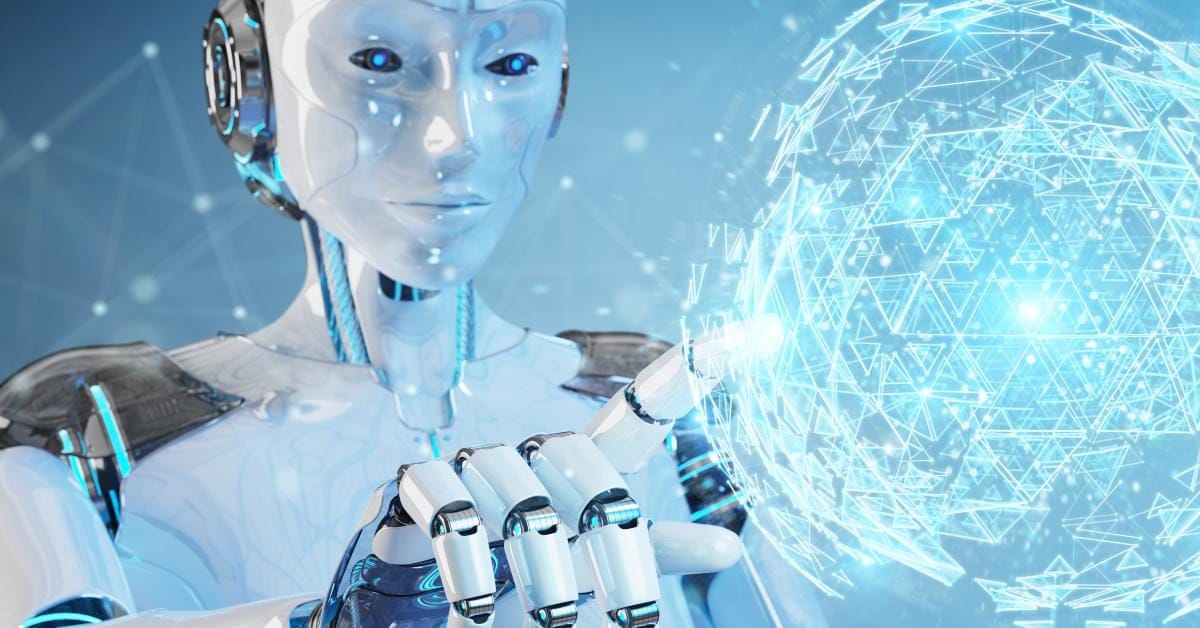
The Role of Robotics in Streng..
Robotics plays a vital role i.. Read More
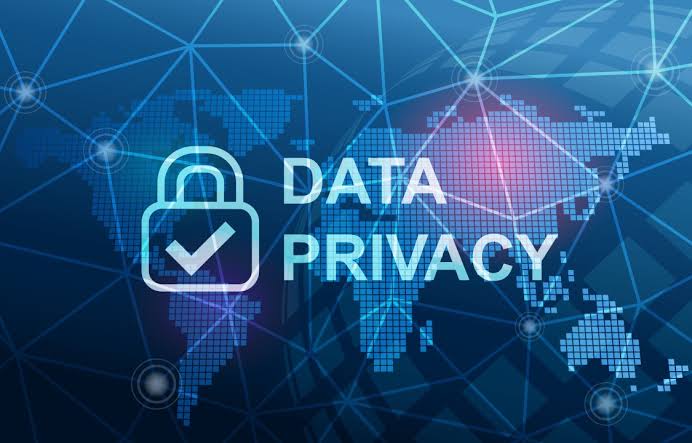
Data privacy regulations (GDPR..
Data privacy regulations such.. Read More
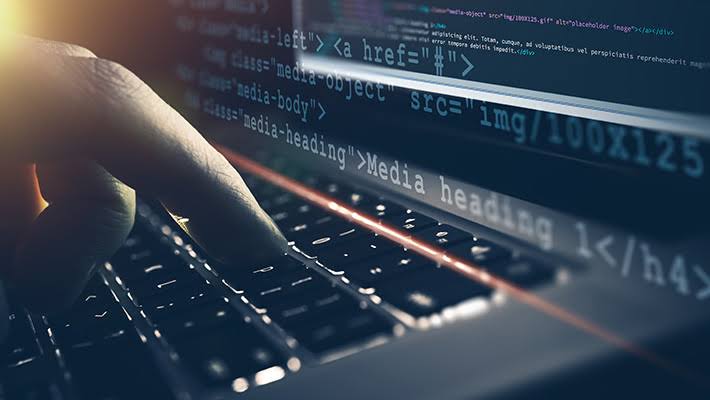
The Future of Cybersecurity: A..
The future of cybersecurity i.. Read More
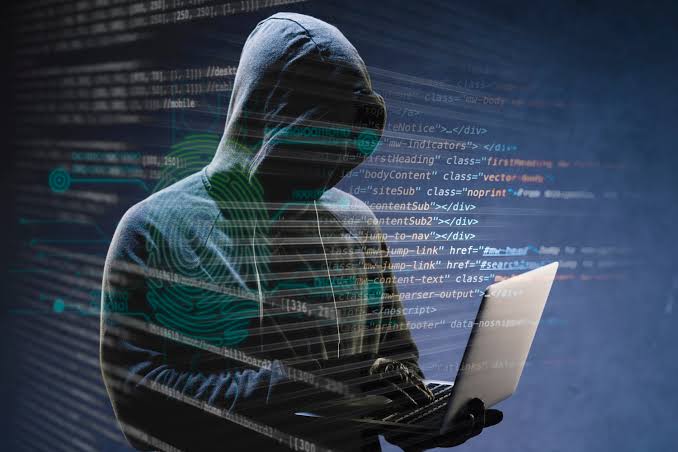
Rising Cyber Crimes: Latest T..
Cyber crimes are rapidly grow.. Read More
Explore Other Categories
Explore many different categories of articles ranging from Gadgets to Security
Smart Devices, Gear & Innovations
Discover in-depth reviews, hands-on experiences, and expert insights on the newest gadgets—from smartphones to smartwatches, headphones, wearables, and everything in between. Stay ahead with the latest in tech gear
Apps That Power Your World
Explore essential mobile and desktop applications across all platforms. From productivity boosters to creative tools, we cover updates, recommendations, and how-tos to make your digital life easier and more efficient.
Tomorrow's Technology, Today's Insights
Dive into the world of emerging technologies, AI breakthroughs, space tech, robotics, and innovations shaping the future. Stay informed on what's next in the evolution of science and technology.
Protecting You in a Digital Age
Learn how to secure your data, protect your privacy, and understand the latest in online threats. We break down complex cybersecurity topics into practical advice for everyday users and professionals alike.
© 2025 Copyrights by rTechnology. All Rights Reserved.